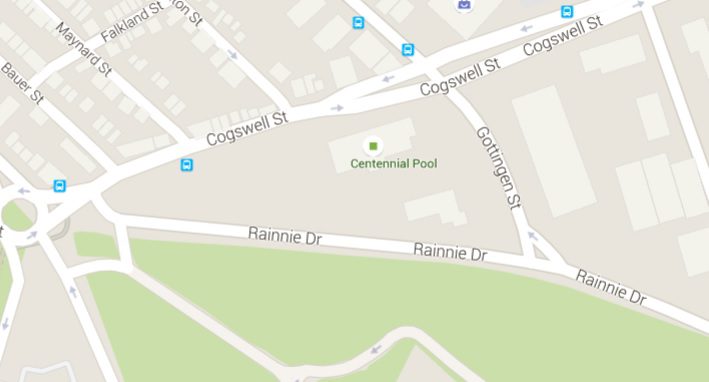Rainnie Drive protected bike lane in Halifax officially opens to rave cycling reviews: reports
As Canadian Cycling Magazine reported back in September, Halifax has long been slated to be the recipient of a new bike lane, to be installed on Rainnie Drive in the city's north end. This week, that bike lane is officially open.


As Canadian Cycling Magazine reported back in September, Halifax has long been slated to be the recipient of a new bike lane, to be installed on Rainnie Drive in the city’s north end.
This week, that bike lane officially opened.
Heading east, the route of the lane skirts the southern edge of the Halifax Citadel, then gently descends before meeting Gottingen—about 300 metres in all. Its location is on a section of Rainnie Drive that was re-shapen last summer, when the new Cogswell Roundabout was installed, changing the traffic flow on the street to one way. The bike lane itself is a two-way lane, easing riders into a steady coast in the shadow of the Citadel on one side, or into a climb on the other.
When the lane proceeds easy, it also connects to a multi-use pathway that loops around the roundabout, while its westbound path, when it meets the intersection of Rainnie Drive and Gottingen Street, is accessible via a crosswalk. Along its length, the lane is divided from the flow of vehicle traffic by a painted buffer area on the road, and also by features such as posts and on-street parking—both of which are situated in the “door zone,” keeping riders away from the doors of parked cars.
The lane, as previously reported, is part of a pilot project whose aim is to provide safer cycling facilities, hopefully to entice more would-be Haligonian riders to saddle up and roll out themselves. While a process of consultation with the public is forthcoming—focused mainly on the question of how to extend these lanes, based on their success—the response from riders, /Global News reveals, has been a resoundingly positive one.
Watch: A look at Halifax's first protected bike lane.
#t pic.twitter.com/FdnkiGDG09
— Pete Stevens (@indoblue82) November 24, 2015
“I thought it was awesome,” said local cyclist Eliza Jackson, speaking with the news outlet. “It’s that extra element of safety so it makes for a really smooth and safe ride.” Others—particularly local cycling advocates—were impressed by other ways that a safe ride is safeguarded on the newly-finished lane, especially in how cars and bikes are separated.
“It’s so clear,” said Eric Jonsson of the Halifax Cycling Coalition, speaking with Global News, “the distinction between where the bikes are going to go and where the cars are supposed to go. When you drive by it, obviously that’s a bike lane.”
Jonsson was also generous with praise about the city’s handling of the lane, emphasizing the speed of the plan’s implementation.
“It was relatively quick to implement,” he said, “which I think is a really positive step for the city, that it went from the idea stage to being, you know paved and put out there pretty quickly. We’ve seen the delays other projects have had and we were really excited about it.”
Rainnie’s protected bike lane cost $10,000, and officials are now looking at other parts of the city to take the project further.
